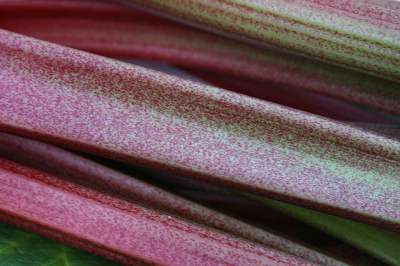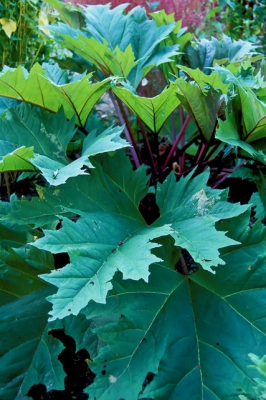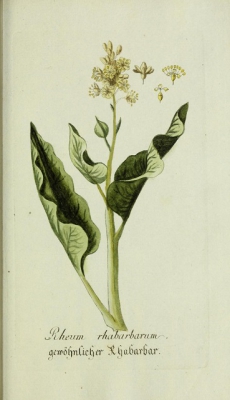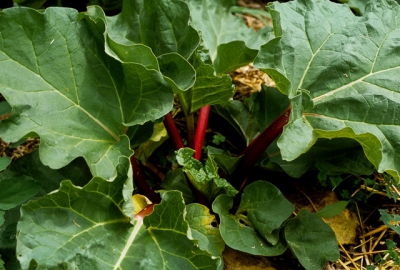Editor’s Note: Each month, HerbalEGram highlights a conventional food and
briefly explores its history, traditional uses, nutritional profile, and modern
medicinal research. We also feature a nutritious recipe for an easy-to-prepare
dish with each article to encourage readers to experience the extensive
benefits of these whole foods. With this series, we hope our readers will gain
a new appreciation for the foods they see at the supermarket and frequently
include in their diets.
The basic materials for this series were compiled
by dietetic interns from Texas State University in San Marcos and the
University of Texas at Austin through the American Botanical Council’s (ABC’s)
Dietetic Internship Program, led by ABC Education Coordinator Jenny Perez. We would like to acknowledge Perez and ABC Chief
Science Officer Stefan Gafner, PhD, for their contributions to this project.
By Hannah
Baumana and Jennifer Wibleb
a HerbalGram Associate Editor
b ABC Dietetics
Intern (Texas State, 2018)
Overview
Garden
rhubarb (Rheum rhabarbarum) is an
herbaceous perennial that belongs to the Polygonaceae, or  buckwheat, family.1
It has large, triangular leaves that grow up to a foot across with petioles, or
stalks, that grow from short, thick rhizomes.1,2 The stalks tend to
grow in shades of deep red, light pink, and green, and are ready for harvest in
mid- to late spring.3,4 Native to Mongolia, India, China, and other
Asian countries, rhubarb species grow best in cool, temperate, and subtropical
climates with mild summers.1,5 The Rheum genus includes more than 60 known species. The stalks of both
R. rhabarbarum and R. rhaponticum (false rhubarb) are commonly used in cooking, while the
rhizome or root of Chinese rhubarb (R.
officinale) and Turkey rhubarb (R.
palmatum) have a long history of medicinal use that precedes the use of the
stalk as food.4 buckwheat, family.1
It has large, triangular leaves that grow up to a foot across with petioles, or
stalks, that grow from short, thick rhizomes.1,2 The stalks tend to
grow in shades of deep red, light pink, and green, and are ready for harvest in
mid- to late spring.3,4 Native to Mongolia, India, China, and other
Asian countries, rhubarb species grow best in cool, temperate, and subtropical
climates with mild summers.1,5 The Rheum genus includes more than 60 known species. The stalks of both
R. rhabarbarum and R. rhaponticum (false rhubarb) are commonly used in cooking, while the
rhizome or root of Chinese rhubarb (R.
officinale) and Turkey rhubarb (R.
palmatum) have a long history of medicinal use that precedes the use of the
stalk as food.4
Phytochemicals and Constituents
Plants
in the genus Rheum contain a variety
of beneficial compounds, including stilbenes, flavonoids, essential oils, tannins,
organic acids, and anthranoids (e.g., anthraquinones, anthrones, and bianthrones).5
Anthraquinones are pigmented compounds that give rhubarb stalks their color. The
most common anthraquinones in Rheum
species are glycosides of aloe-emodin and emodin (orange), chrysophanol
(yellow), physcion (red-orange), and rhein (red).6 These compounds
and their derivatives also give rhubarb its laxative effect.7 In
addition, they have been shown to inhibit the growth and proliferation of
cancer cells in vitro.5,8
Rhein
has been found to have many potential benefits. Due to its anti-inflammatory
and antioxidant properties, rhein has been investigated for use in treating
diabetic nephropathy, the leading cause of end-stage renal failure.9
Rhein also has been found to suppress hyperglycemia specifically by improving
insulin secretion from pancreatic β-cells.
Stilbenes
are phytochemicals associated with estrogenic activity.5 Several stilbene
derivatives are present in rhubarb, such as rhaponticin and deoxyrhaponticin,
which have been studied in human clinical trials and animal models for their
ability to stimulate ovulation and inhibit lactation.
 Rhubarb
stalks contain catechins, gallic acid, and tannins that are responsible for
rhubarb’s astringent properties.5 Flavonoids such as quercetin,
rutin, isoquercitrin, and anthocyanins are most concentrated in the flowers and
immature fruits of the plant. These flavonoids contribute to rhubarb’s high
antioxidant content, which is similar to that of kale (Brassica oleracea, Brassicaceae) and spinach (Spinacia oleracea, Chenopodiaceae).10 Anthocyanin-rich
foods like rhubarb can support urinary tract health, fight bacteria, and
improve memory function.3 Rhubarb
stalks contain catechins, gallic acid, and tannins that are responsible for
rhubarb’s astringent properties.5 Flavonoids such as quercetin,
rutin, isoquercitrin, and anthocyanins are most concentrated in the flowers and
immature fruits of the plant. These flavonoids contribute to rhubarb’s high
antioxidant content, which is similar to that of kale (Brassica oleracea, Brassicaceae) and spinach (Spinacia oleracea, Chenopodiaceae).10 Anthocyanin-rich
foods like rhubarb can support urinary tract health, fight bacteria, and
improve memory function.3
The
essential or volatile oil components present in rhubarb are primarily
terpenoids, eugenol, and methyl heptyl ketone.5 Organic acids such
as oxalic, palmitic, acetic, malic, citric, and formic acids are present in all
parts of the plant and give rhubarb its characteristic sour taste. Oxalic acid
is present primarily in the form of calcium oxalate. The concentrations of
organic acids in rhubarb stalks can reach 1.8% of the fresh weight, with malic
acid (up to 1.8%), oxalic acid (up to 0.3%), and citric acid (up to 0.2%) as
the main components.11 Rhubarb leaves are toxic to humans due to the
higher levels of oxalic acid (approximately 0.5%).12 Consuming small
amounts of leaves may cause nausea and mild gastrointestinal irritation, while
toxicity from larger amounts may lead to renal damage, hypocalcemia, and
electrolyte imbalance. However, the rhubarb stalks have a much lower oxalic
acid content.
In a
2010 study, various cooking methods used for rhubarb stalks were analyzed to
determine how each method impacts the bioavailability of bioactive components.13
Common preparations included blanching, stewing, and baking. After cooking,
polyphenol levels were higher than in raw rhubarb. The highest levels were
found after slow cooking for 30 minutes and baking for 20 minutes.
Juicing
rhubarb stalks preserves most of the nutrients and phytochemicals while
minimizing antinutrients. A study found that rhubarb juice has lower levels of
oxalic acid than the raw stalks do, but it also contains no calcium. Magnesium,
potassium, and sodium were still present in the juice. Catechin, procyanidins B1
and B2, and rutin were also present in the rhubarb juice.14
Historical and Commercial Uses
Several
species of rhubarb have been used medicinally, culinarily, and ornamentally.5
In northern Asia, dried rhizomes of R.
palmatum and R. officinale have
been used medicinally as a purgative and an antibacterial for dysentery for
5,000 years.1,12
Rhubarb
was imported throughout Europe beginning with the advent of the Silk Road in
the first century BCE.15 Rhubarb stalks began to be consumed as a
food product in 17th-century England; however, Europeans were unable to grow
rhubarb of the same medicinal quality as that from Asia due to the differing
climate and the plant’s likelihood to hybridize, and they sought reliable
sources for trade.4,15 Beginning in the 1730s, the British East
India Company and the Rhubarb Commission in Mongolia supplied Europe with large quantities of rhubarb root. Due to food shortages during World War I, the
British government encouraged the consumption of rhubarb leaves as a substitute
for spinach. This lead to cases of oxalic acid poisoning and even death. In the
1820s, rhubarb was introduced to the United States, specifically Maine and
Massachusetts.4
Due
to its tart flavor, rhubarb often is sweetened with sugar or combined with
other fruits. Rhubarb is also known as “pie plant” because it often is stewed
for pie fillings. Rhubarb stalks are also cooked with strawberries, apples, or
ginger as a jam, added to baked goods, or fermented to make wine.
Modern Research
Anticancer Properties
Anthraquinones
found in rhubarb have been investigated for their potential antitumor effects.
In both in vitro and in vivo studies, the anthraquinones emodin and aloe-emodin
were found to inhibit growth of various types of cancer cells and tumors.16
They also increased sensitivity to other chemotherapeutic agents. There is
potential for these anthraquinones to be developed as new chemotherapeutic drugs
or for use in conjunction with other drugs.
Diabetes and Metabolic Diseases
Supplementation
with rhubarb stalk powder, which has a high insoluble fiber content, has been correlated
with lower blood cholesterol levels in men with high cholesterol.10
However, a study on diabetic mice found that rhubarb stalk fiber supplementation
did not have significant cholesterol-lowering effects. More research is
necessary to evaluate rhubarb as an adjuvant treatment for high cholesterol,
particularly in diabetic patients.17
Rhein
from rhubarb has exhibited anti-inflammatory and antiproliferative actions, and
was found to have hypoglycemic and hypolipidemic activities in animal models. In
addition to reducing inflammation, rhein also improved the insulin secretory
function of pancreatic β-cells in animal models, which suggests a positive effect
on diabetic nephropathy, a complication of uncontrolled diabetes.9
Estrogenic Activity
In
2015, a randomized, single-blind, controlled trial concluded that both rhubarb
root and stalk can be used as a possible treatment for the symptoms of
dysmenorrhea and menopause, and are safe alternatives to hormone replacement
therapy with no known adverse side effects.3
Consumer Considerations
The
leaves of the rhubarb plant should not be consumed, as they contain higher
concentrations of oxalates,  which can be eliminated only through the renal
pathways, and may cause kidney damage. The
consumption of rhubarb stalk also is contraindicated for those with a history
of renal disease or kidney stones due to the oxalic content still present in
the stalk.9,16 which can be eliminated only through the renal
pathways, and may cause kidney damage. The
consumption of rhubarb stalk also is contraindicated for those with a history
of renal disease or kidney stones due to the oxalic content still present in
the stalk.9,16
Stalks should not be harvested for the first two years,
after which a single plant may produce four to 12 pounds of stalks annually.
Stalks can be kept for two to four weeks in the refrigerator, blanched and
stored in the freezer, or canned for long-term storage.18
Potential drug interactions with rhubarb root
supplementation include an increase in the effects of blood-thinning
medications (e.g., warfarin), an increase in the occurrence of adverse effects
from digoxin, depletion of potassium stores if used while taking
corticosteroids, and enhancing the effects of stimulant laxatives.3
Nutrient Profile19
Macronutrient Profile: (Per 1 cup diced
rhubarb [approx. 122 g])
26 calories
1.1 g
protein
5.5 g
carbohydrates
0.2 g
fat
Secondary Metabolites: (Per 1 cup diced
rhubarb [approx. 122 g])
Excellent source of:
Vitamin
K: 35.7 mcg (29.8% DV)
Very good source of:
Vitamin
C: 9.8 mg (10.9% DV)
Manganese:
0.24 mg (10.4% DV)
Good source of:
Calcium:
105 mg (8.1% DV)
Potassium:
351 mg (7.5% DV)
Dietary
Fiber: 2.2 g (7.3% DV)
Also provides:
Riboflavin:
0.04 mg (3.1% DV)
Magnesium:
15 mg (3.6% DV)
Vitamin
A: 124 IU (2.5% DV)
Folate:
9 mcg (2.3% DV)
Niacin:
0.37 mg (2.3% DV)
Vitamin
B6: 0.03 mg (1.8% DV)
Iron:
0.3 mg (1.7% DV)
Thiamin:
0.02 mg (1.7% DV)
Phosphorus:
17 mg (1.4% DV)
DV =
Daily Value as established by the US Food and Drug Administration, based on a
2,000-calorie diet.
|
Recipe: Spiced
Braised Rhubarb
Courtesy of Saveur20
Ingredients:
- 1
1⁄2 lb. rhubarb stalks, trimmed and cut into 2" pieces on an angle
- 1
cup fresh orange juice
- 1⁄4
cup honey
- 1⁄2
tsp. kosher salt
- 8
pods green cardamom
- 2
whole star anise
- 1
vanilla bean, split lengthwise, seeds scraped and reserved
- 1
(1⁄2-inch) piece ginger, peeled and thickly sliced crosswise (To learn more
about the benefits of ginger, click here.21)
- Yogurt
or vanilla ice cream, for serving
Directions:
- Heat
oven to 400°F.
- Mix
together rhubarb, orange juice, honey, salt, cardamom, star anise, vanilla
bean and seeds, and ginger in a 9" x 13" baking dish.
- Bake,
stirring occasionally, until rhubarb is tender, 14-16 minutes. Let cool to
room temperature. Serve over yogurt or ice cream, if desired.
|
Image credits (top to bottom): Rhubarb stalks. Image courtesy of Mako.
Garden rhubarb. ©2019 Steven Foster.
Rheum rhabarbarum illustration from Plantarum indigenarum et exoticarum icones ad vivum coloratae, oder, Sammlung nach der Natur gemalter Abbildungen inn- und ausländlischer Pflanzen, für Liebhaber und Beflissene der Botanik. 1788.
Chinese rhubarb. ©2019 Steven Foster. References
- van Wyk B-E. Food Plants of the World: An Illustrated
Guide. Portland, OR: Timber Press; 2006.
- Bratsch A, Mainville D. Specialty Crop Profile: Rhubarb. Virginia
Cooperative Extension. 2009;438(110):1-7. Available at: https://pubs.ext.vt.edu/content/dam/pubs_ext_vt_edu/438/438-110/438-110_pdf.pdf. Accessed March 27, 2019.
- Marcel C. Rhubarb: Evidence-Based Care Sheet. Cinahl Information
Systems. October 2016:1-3.
- Rhubarb. New World Encyclopedia. Available at:
www.newworldencyclopedia.org/entry/Rhubarb. Accessed April 10, 2018.
- Agarwal SK, Singh SS, Lakshmi V, Verma S, Kumar S. Chemistry
and pharmacology of rhubarb (Rheum
species) – A Review. Journal
of Scientific and Industrial Research. 2001;60:1-9.
- Krenn
L, Wichtl M, Loew D. Rhei radix. In: Blaschek W, ed. Wichtl – Teedrogen und Phytopharmaka. 6th ed. Stuttgart, Germany:
Wissenschaftliche Verlagsgesellschaft mbH. 2016:550-553.
- Why Shouldn’t You Eat Rhubarb Leaves? - The Chemistry of
Rhubarb. Compound Interest. April 17, 2015. Available at: www.compoundchem.com/2015/04/16/rhubarb/.
Accessed April 11, 2018.
- Zheng Q-xia, Wu H-feng, Guo J, et al. Review of rhubarbs:
Chemistry and pharmacology. Chinese Herbal Medicines.
2013;5(1):9-32.
- Zeng C-C, Liu X, Chen G-R, et al. The molecular mechanism of rhein
in diabetic nephropathy. Evidence-Based Complementary and Alternative Medicine.
2014;487097.
- Takeoka GR, Dao L, Harden L, Pantoja A, Kuhl JC. Antioxidant
activity, phenolic and anthocyanin contents of various rhubarb (Rheum spp.) varieties. International Journal of Food Science and
Technology. 2013;48(1):172-178.
- Hoffmann-Bohm
K, Ferstl W. Rheum. In: Hänsel R, Keller K, Rimpler H, Schneider G, eds. Hagers Handbuch der Pharmazeutischen Praxis,
Band 6. Drogen P-Z. Berlin & Heidelberg, Germany: Springer-Verlag.
1994:411-439.
- Barceloux DG. Rhubarb and oxalosis (Rheum species). Medical Toxicology of Natural Substances: Foods, Fungi,
Medicinal Herbs, Toxic Plants, and Venomous Animals.
2009;55:403-411.
- McDougall GJ, Dobson P, Jordan-Mahy N. Effects of different
cooking regimes on rhubarb polyphenols. Food Chemistry.
2010;119:758-764.
- Will F, Dietrich H. Processing and chemical composition of
rhubarb (Rheum rhabarbarum) juice. LWT – Food Science
and Technology. 2013;50(2):673-678.
- Foust CM. Kremers Award Lecture: Mysteries of Rhubarb:
Chinese Medicinal Rhubarb through the Ages. Pharmacy in History.
1994;36(4):155-159.
- Huang Q, Lu G, Shen H-M, Chung MC, Ong CN. Anti-cancer
properties of anthraquinones from rhubarb. Medicinal Research Reviews.
2007;27(5):609-630.
- Cheema SK, Goel V, Basu TK, Agellon LB. Dietary rhubarb (Rheum rhaponticum) stalk fibre does not
lower plasma cholesterol levels in diabetic rats. British Journal of
Nutrition. 2003;89(2):201.
- Beddes T. Rhubarb in the Garden. Utah State
University Cooperative Extension: Horticulture.
July 2011.
- Basic
Report: 09307, Rhubarb, raw. United States Department of Agriculture
Agricultural Research Service website. National Nutrient Database for Standard
Reference Legacy Release. April 2018. Available at: https://ndb.nal.usda.gov/ndb/foods/show/09307.
Accessed March 27, 2019.
- Spiced
Braised Rhubarb. Saveur. March 20,
2013. Available at: www.saveur.com/article/recipes/Spiced-Braised-Rhubarb.
Accessed March 27, 2019.
- Bauman
H, Hill K. Food as Medicine: Ginger (Zingiber
officinale, Zingiberaceae). HerbalEGram. 2015;12(3). Available at: http://cms.herbalgram.org/heg/volume12/03March/March2015_FaM_Ginger.html.
Accessed March 27, 2019.
|